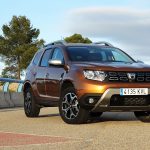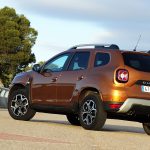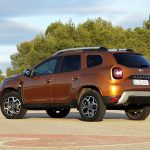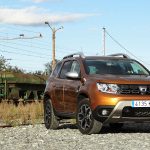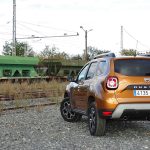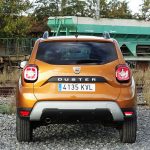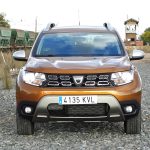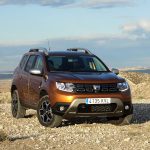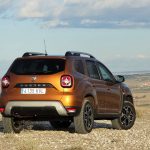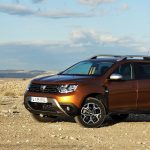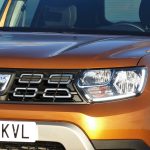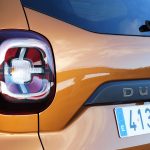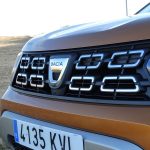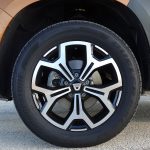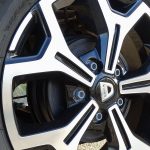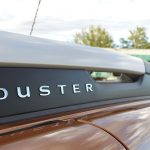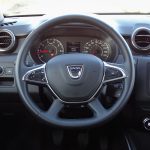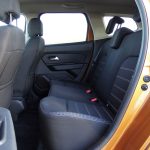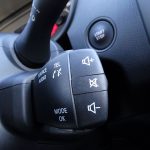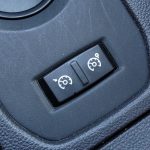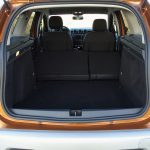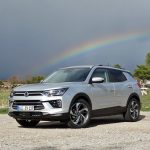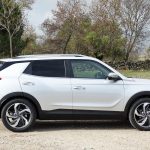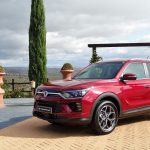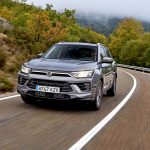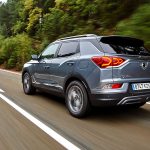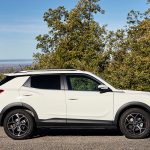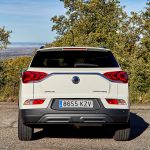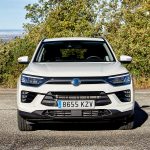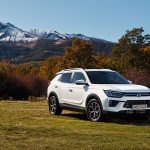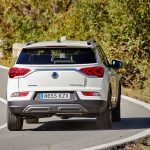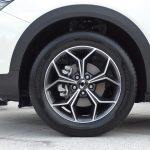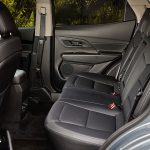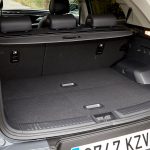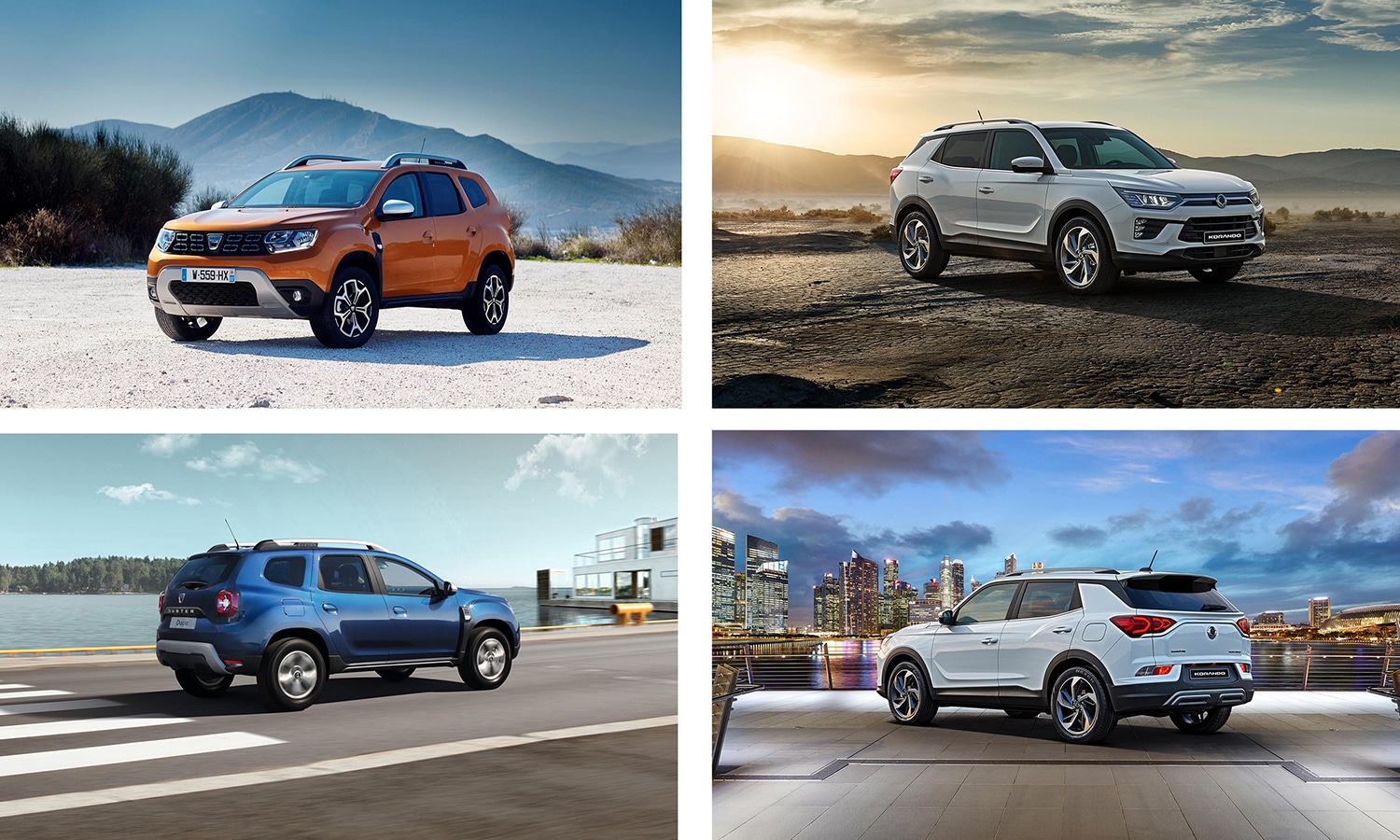
Today we compare two suv cars. In this case we have opted for two of the cheapest models in the SUV segment. We are going to evaluate and compare the Dacia Duster and SsangYong Korando, extracting its advantages and shortcomings, as well as its main characteristics, mechanics, dynamic behavior and safety. Logically, we do not forget their prices either.
As you all know, the Dacia Duster is much more demanded by the Spanish public than the SsangYong Korando. In fact, it is one of the best-selling all-road in recent years. However, the difference in marketing does not do it justice. In the following lines I tell you everything about both models. Which is better, the Dacia Duster or the SsangYong Korando?
Exterior design
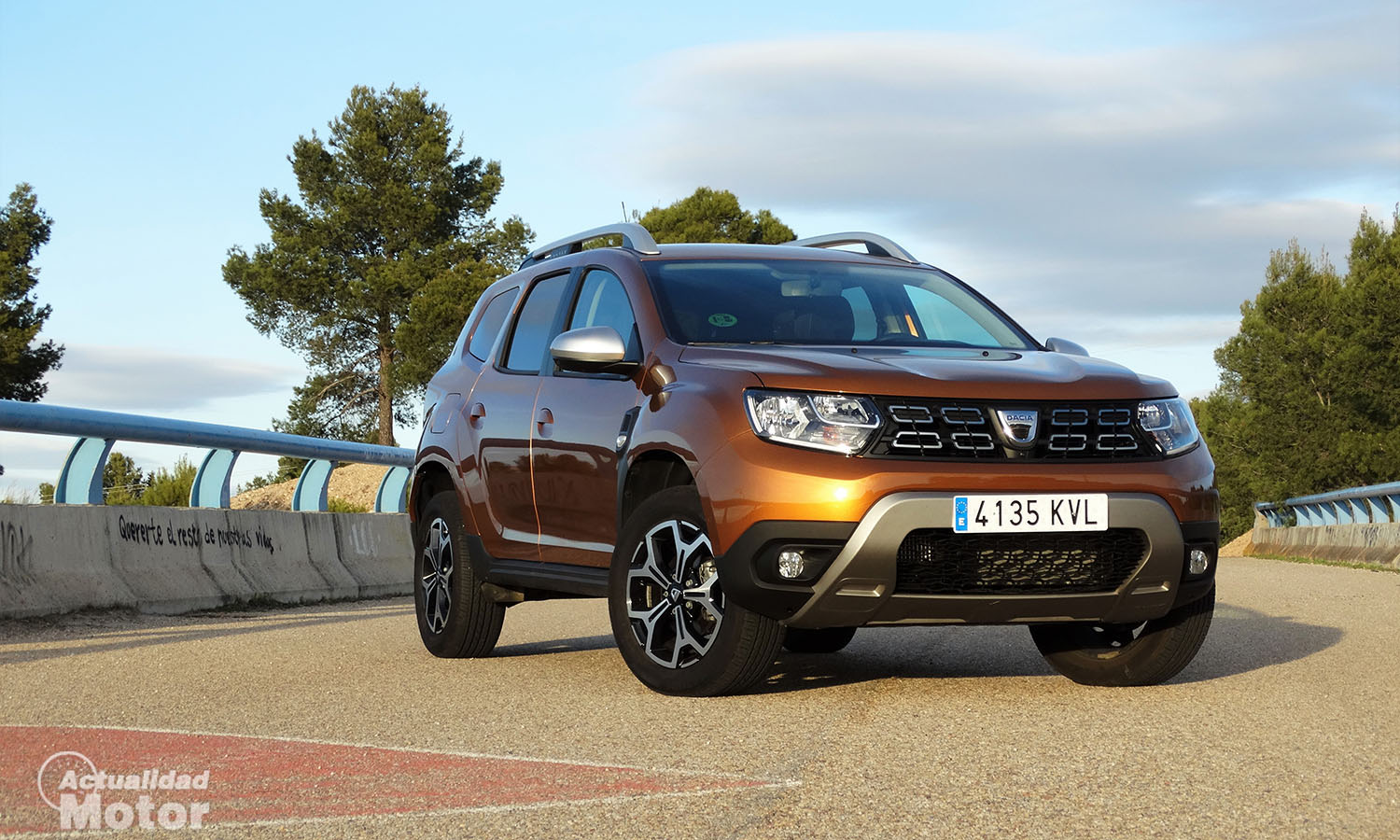
We start with the exterior design of these two vehicles. There is nothing written about tastes, but most of the people with whom I have talked about this subject have always told me that they do not consider Duster de Dacia an "ugly" model. As a general rule I quite like your aesthetic, although it is no less true that the design has been undergoing slight variations for many years.
The Romanian model has a personal and simple design. It is not at all overloaded and knows how to convey that feeling of robustness and forcefulness that is demanded from the most camperos vehicles. And this has been the case since it first arrived a decade ago, although it has been updated since then. On an aesthetic level, I admit that I like it more than its rival in this comparison.
In turn, the SsangYong It is in its fourth generation and has changed a lot compared to the previous model. This new Korando, like almost all SsangYong models, has an aesthetic design of the too asian exterior. Although it is usually liked in the East, it is not the style that most falls in love with in Spain or Europe.
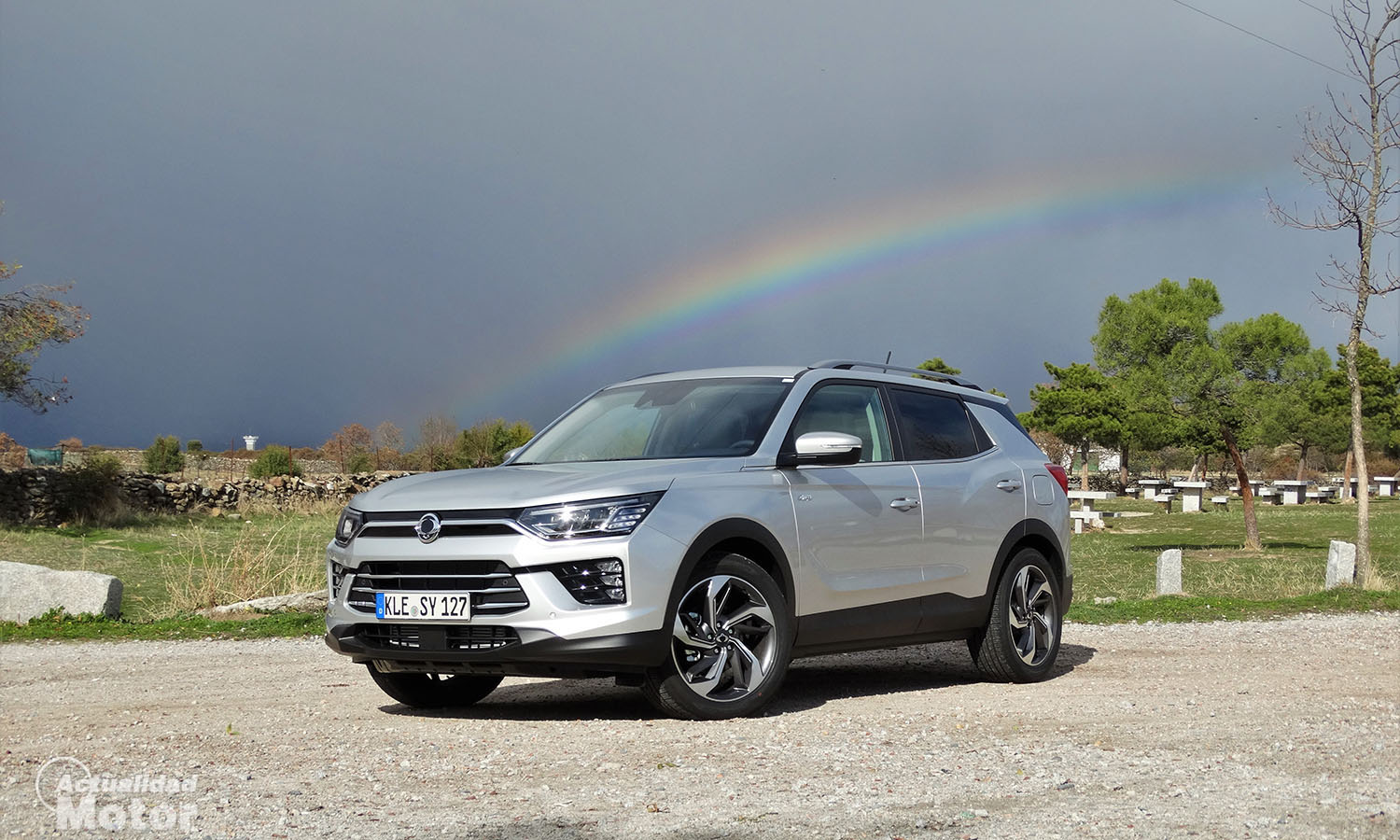
Bet on many straight lines, angular details and various chrome elements, the latter to increase the perception of quality. The rear is still more Asian than the front, or perhaps its "nose" is already somewhat familiar to us because it resembles other company products. Of course, the lower protections on all four sides and wheel arches, as well as the roof rails, are not missing.
As you can see, the difference in design style is very noticeable between both cars. The Dacia Duster likes more in the European market, while the SsangYong Korando falls better in Asia. Anyway, as they say, About tastes there is nothing written. Let each one choose.
Interior design, technology and qualities
If we go to the cabin we also find totally different designs. The interior of the SsangYong looks much more technological and current than that of the Dacia, which is honestly quite outdated. We remember that it is a car that arrived on the market in 2010. However, both have many details to improve.

The Dacia Duster is a car with a clear low-cost orientation, which has also been on the market for many years. That is why when we get on it the feeling is that we are not facing a new or recent car, especially because of the infotainment system, which is of very improvable quality and in a position that is too low, as well as because of the instrument panel. , which does not even indicate the "red zone" of the rev counter.
On the other hand, and following the Romanian model, in 2019 it received some changes. The climate control area, as well as the surrounding buttons, have changed completely. Now it looks much more elegant and transmits better sensations. The gear knob and its operation has also improved.
If we get off the Duster and get on the Korando we find a much more current design. the system infotainment is much more accomplished in every way and the screen is in a better position. For its part, the instrument panel can be fully digital (with a 10,25-inch screen) and partially customizable, something that is very fashionable in recent times.
Aesthetically the dashboard is quite nice, but it has a big but: use a lot of gloss black. This famous piano black is present throughout the medial area of the dashboard and, although in the photos it may seem that it looks good, the truth is that it produces many reflections and also traps a lot of dirt, not to mention dust and fingerprints.
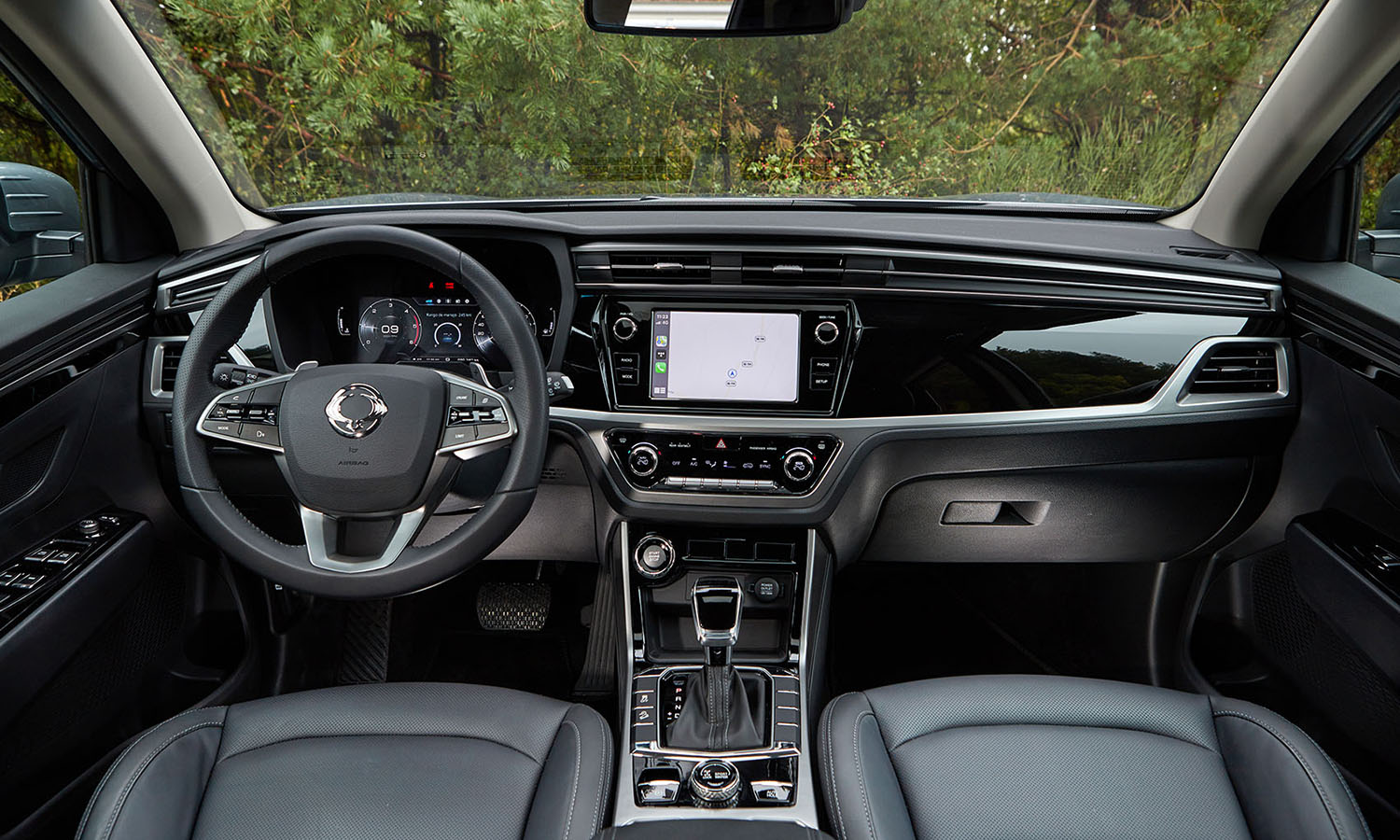
If we talk about qualities, neither of them is among the best in its segment. Both use hard plastics and there are hardly any soft surfaces. The touch, without being bad, is not the best either. Of course, both present good adjustments of the different trims, since creaks are not heard when pressing on almost any component; something that is especially interesting in the Korando for having many rigid plastic parts and contours in them.
There are some areas where the Korando ranks way above the Duster. Regarding the comfort interior, in addition to the greater equipment, we have much more comfortable and pleasant seats, a better touch of the buttons (indicators, steering wheel controls, window regulator buttons, etc.) and, in general, a greater impression of quality.
Exterior dimensions and interior space
| Length | Width | Height | Battle | |
|---|---|---|---|---|
| Length | Width | Height | Battle | |
| Dacia Duster | 4.341 mm | 1.804 mm | 1.693 mm | 2.673 mm |
| SsangYong Korando | 4.450 mm | 1.870 mm | 1.629 mm | 2.675 mm |
As can be seen from the table, the SsangYong Korando is larger than the Dacia Duster, especially in overall length and width. Indeed, while the South Korean is clearly a C-SUV segment model, the Duster falls a bit in the middle of the B-SUV and C-SUV segments.
Both cars are roomy enough for four normal-sized adults to travel with plenty of room. The front and rear seats are good in both cars, but in the Korando that greater level of width is noticeable, since we are a little further away from our companion. There is also more room for the knees. If we have to travel five, we will go more comfortable in the SsangYong, being able to even plan a trip with all seats occupied. Of course, this does not mean that the rear occupants are going to be as comfortable as if only four people were traveling.
trunks

We leave the rear seats and go to see the trunks. The difference between the two is not very big, but yes favorable for Dacia. The Duster approves a volume of 445 liters, which is not bad at all. For its part, the Korando claims to have a trunk of 551 liters, but that is the capacity from floor to ceiling. According to the data, the volume up to the tray is 423 litres, which places it clearly below the segment average.
Despite the above, the SsangYong has not said its last word in the trunk. Unlike the Dacia, the Korando does have a double-height floor and we can also use one of the floor pieces as a load separator. In addition, in the Duster the upholstery of the trunk is really bad. In the Korean they fit very well, it has a good touch and they are infinitely better finished.

Mechanics Offer
Dacia Duster engines
| Denomination | Fuel | Number of cylinders | Power |
|---|---|---|---|
| Denomination | Fuel | Number of cylinders | Power |
| 1.0 TCe | Petrol | 3 cylinder | 100 CV |
| 1.0 TCe | GLP | 3 cylinder | 100 CV |
| 1.5 dCi | Diesel | 4 cylinder | 115 CV |
| 1.3 TCe | Petrol | 4 cylinder | 130 CV |
Currently the mechanical range of the Dacia Duster is not too wide, but it is enough to meet the requirements of most users. Starting with the engines, we have a 115 hp diesel and two gasoline ones, giving 100 and 130 hp. The less powerful can also be prepared for LPG (receives Eco label).
There are front-wheel drive and 4 × 4 versions, which is very good. The only "but" is that, at least currently, versions with automatic transmission are not marketed, being all of them manual transmission.
SsangYong Korando Engines
| Denomination | Fuel | Number of cylinders | Power |
|---|---|---|---|
| Denomination | Fuel | Number of cylinders | Power |
| D16T (1.6) | diesel | 4 cylinder | 136 CV |
| G15T (1.5) | gasoline | 4 cylinder | 163 CV |
Fairer is the supply of SsangYong Korando engines, where we only have two alternatives. On the one hand, the 1.6 hp 16 D136T diesel appears, while on the other we have the 1.5 hp 15 G163T gasoline. Some more engine is missing, especially a gasoline one with about 110 or 120 hp.
On the contrary, there is enough variety when it comes to choosing manual or automatic gearboxes, as well as front or all-wheel drive. In this sense, it adapts very well to the tastes and needs of different clients.
dynamic behavior
And now it's time to talk about dynamic behavior, how these two SUV behave once we're up and running. The first thing to note is that both cars are for driving at a leisurely pace, at legal speeds and without looking for sports sensations. Neither the Duster nor the Korando will give you a good time going at a happy pace on a twisty road.
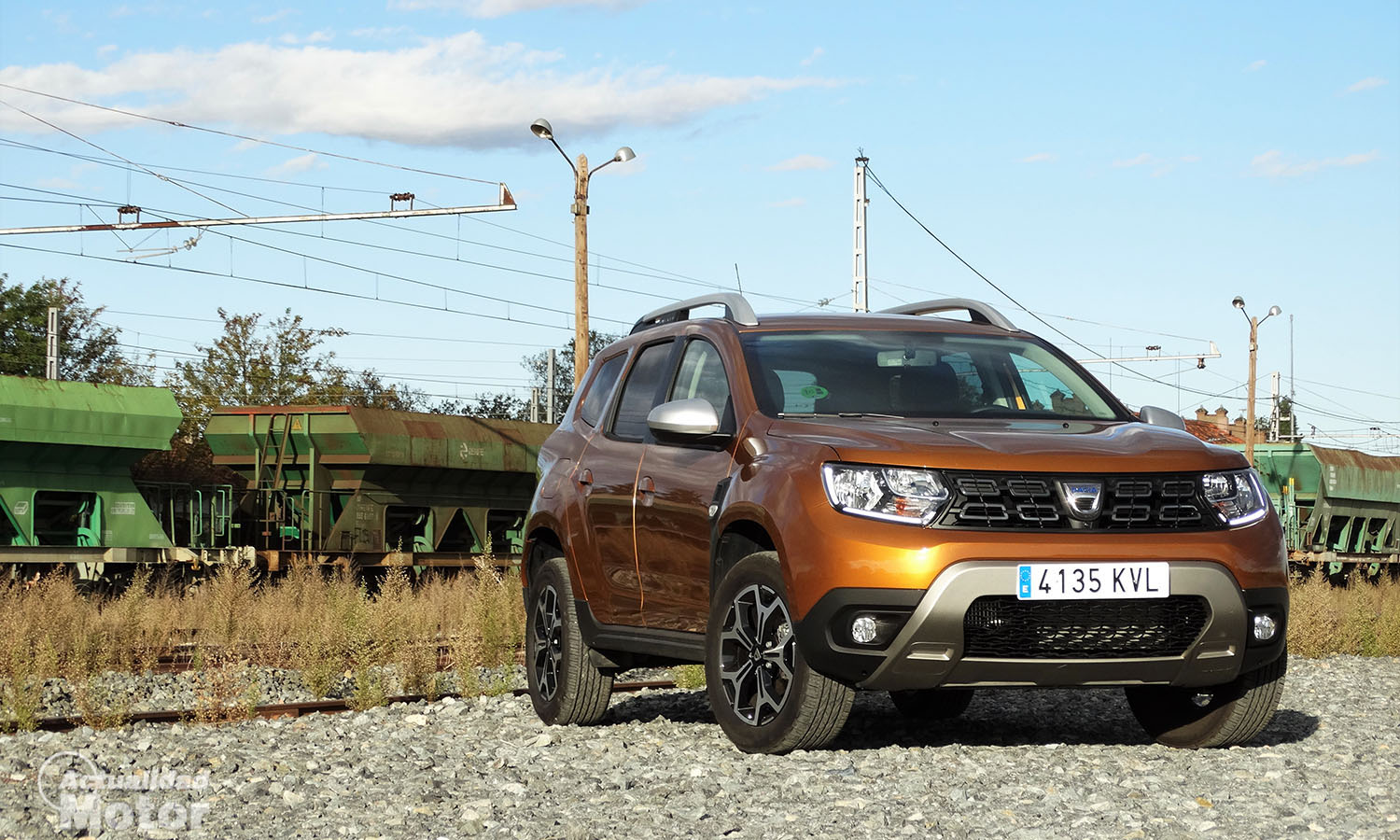

Both models have a clear orientation towards comfort. Their suspensions are soft and they have more travel than many similar vehicles. This gives it great comfort when driving on urban roads and on simple roads, but logically it penalizes when facing curves because the body leans considerably.
To tell the truth, this feeling of instability is also "helped" by the seating. They have little lateral support and we slip from one side to the other if we take a corner fast. Of course, those of the Korando are much more comfortable -despite the little lateral grip- and they are much better made than those of the Duster. The same happens with the armrests, because in the Romanian model it is very narrow, flimsy and of bad impression.
Following the behavior SsangYong Korando shows better sound insulation than the Dacia Duster. In the South Korean, the rolling and aerodynamic noise is better contained, which is much more noticeable in the Romanian. On the other hand, the Korando's diesel engine is very noisy, so much so that despite this good insulation it is noticeably perceived in the passenger compartment.
And since we have talked about engines, currently most of these vehicles are purchased with a gasoline engine, which is not always a success. As we saw above, the SsangYong has a 1.5-liter 163 hp, while the Dacia Duster bets on a 1.0 100 hp and a 1.3 130. Personally, I see the 130 much more attractive for the Duster.
El 163 hp engine from the Korando he is very willful and has a good pair; that is, he moves the car with great agility. So much so that for this reason a smaller engine, about 120 hp, in gasoline can be missed. However, despite the fact that it moves so well, it is a somewhat spent engine. After all, there are quite a few horses in a car whose bodywork is not the most effective. It is not easy to lower the 8 l/100 km of mixed consumption, being more normal to be around 9 litres.
For its part, Dacia Duster with the 130 hp engine it is not as agile and solvent, but it still moves well enough and safely. Also, it's a fairly good running motor, well refined and very quiet. I admit that I was surprised in that sense and therefore I see it as the most recommended mechanical option. In consumption, when we tried it we got a consumption of about 6,5 l/100 km, this very well.
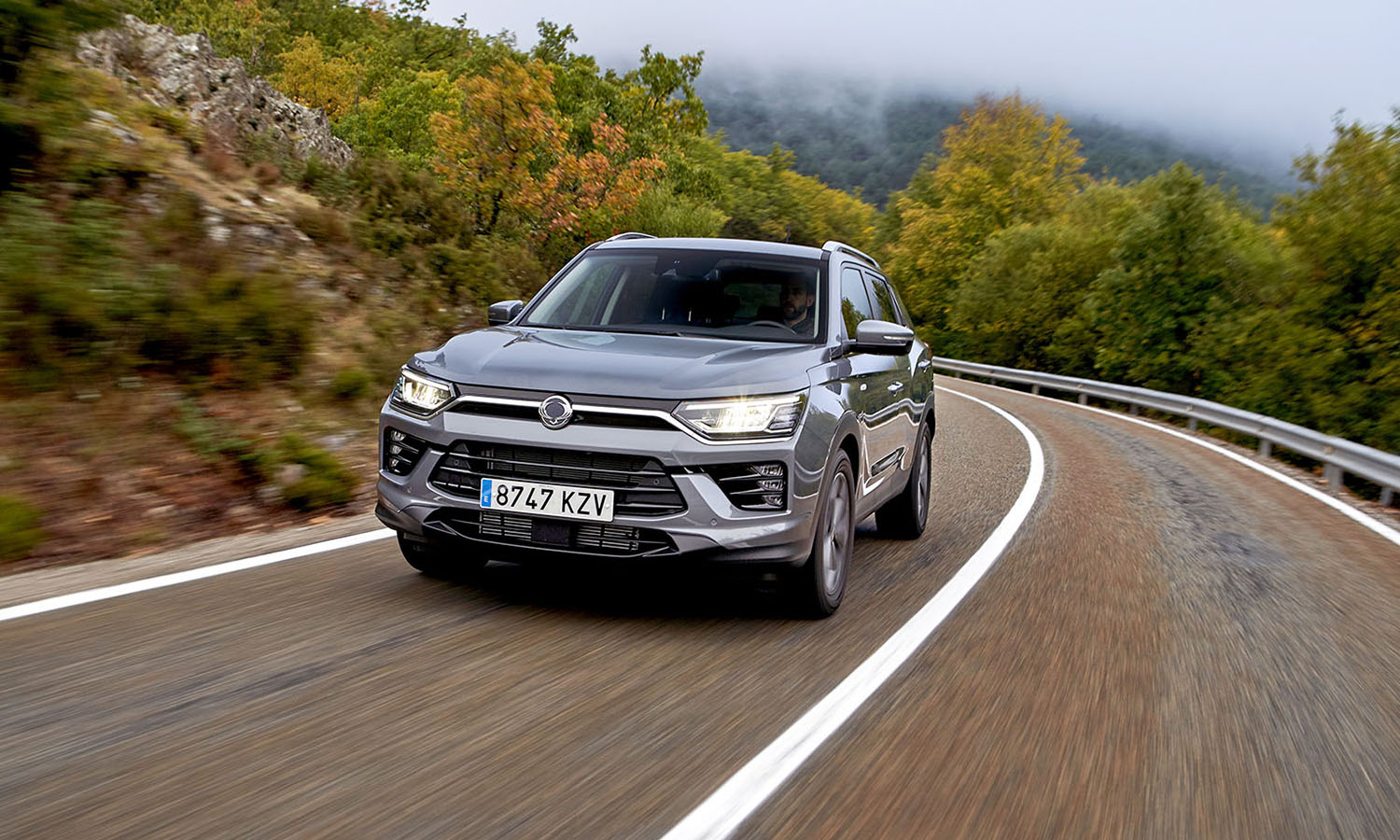
The SsangYong Korando convinces more for ride comfort and ride quality on asphalt than the Dacia Duster. However, the differences are not so obvious off the road. On tracks and roads in acceptable condition, they are two cars that behave very well. The Korando transmits less rattle to the cabin due to its higher quality, but the Duster also runs very well.
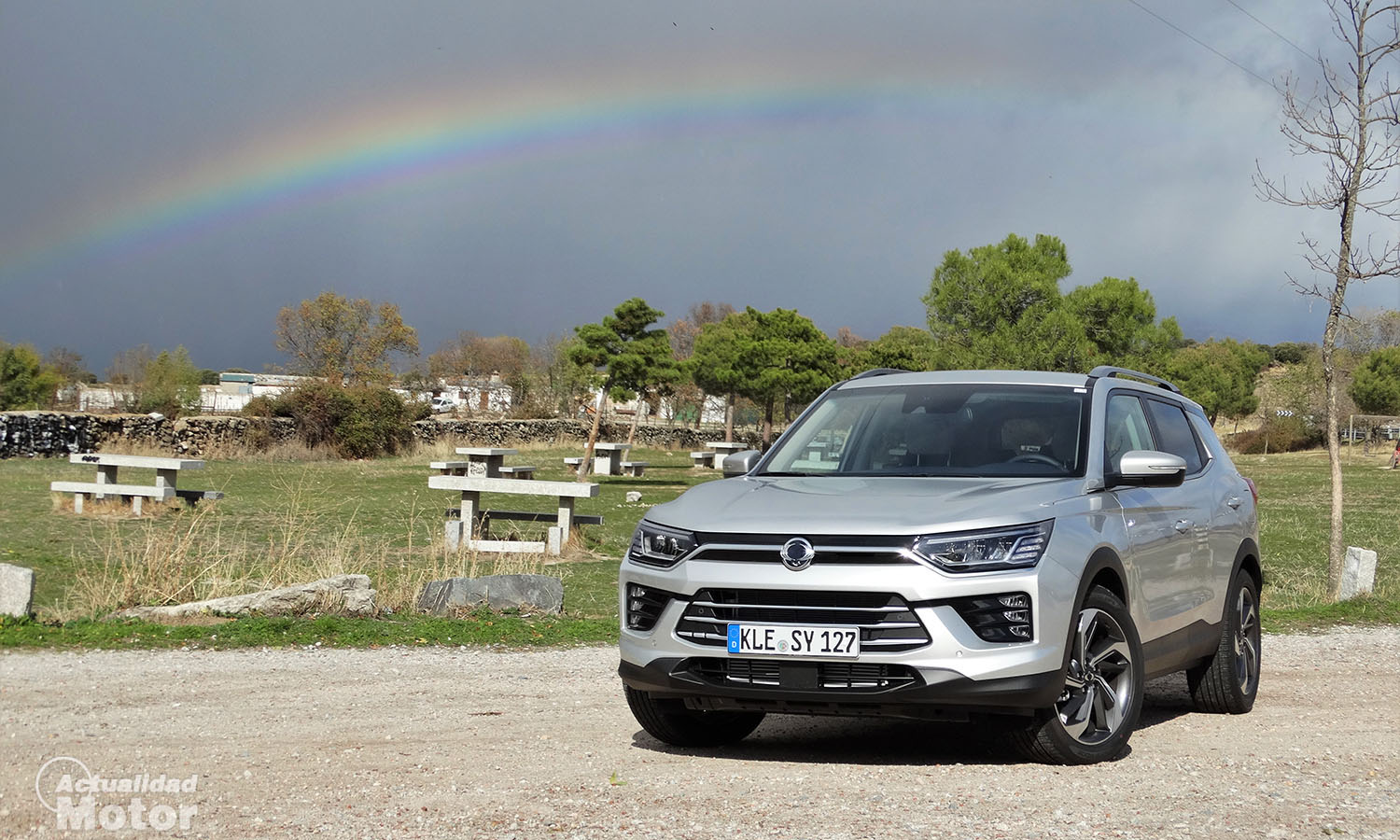
Not that I have tested both cars thoroughly in off road conditions very, very demanding, but the perception is that the Duster defends itself better when the terrain becomes more difficult. It feels more agile and lighter, while also offering slightly better lower dimensions. In addition, most versions of the Dacia have tires with a higher profile than the Korando, which always gives us more safety and reduces the chances of suffering a puncture or blowout.
Security systems
They have little to do with each other in the section on security systems, especially when we refer to active safety and driving assistants. The SsangYong Korando is much more equipped than the Dacia Duster, which, like the latest technologies, only incorporates the presence sensor in the blind spot in the highest finishes. No sign of automatic emergency braking, adaptive cruise control or lane keeping assist, for example.
In turn, the Korando comes as standard (from lowest trim) automatic emergency braking, lane departure warning, lane keeping assist with steering control, automatic high beams, traffic sign recognition, fatigue detection, safe distance alert or slope descent. Yes, all this as standard and integrated into what SsangYong calls SASS safety assistance systems.
EuroNCAP results
If we take a look at the results of the famous crash tests we see a big difference. The Dacia Duster underwent crash tests in 2017, obtaining only 3 EuroNCAP stars. For its part, the SsangYong Korando did so in 2019 and achieved the 5-star EuroNCAP rating.
| Dacia Duster | SsangYong Korando | |
|---|---|---|
| Dacia Duster | SsangYong Korando | |
| Adult Occupants | 71% | 88% |
| Child Occupants | 66% | 85% |
| Pedestrians | 56% | 68% |
| Active Security | 37% | 74% |
As can be seen from the table above, the Korando is much safer in all four categories tested. However, where the most difference is appreciated is in terms of active safety and driving assistants, something that we have always criticized the Duster a lot. The Korando comes very well equipped from the lowest equipment.
What are their prices?
As always, to check their prices we look at the configurators of the brand models. we start with the Dacia Duster and we find that the access version, which corresponds to the Access finish and the 1.0 hp 100 TCe engine part of the 10.760 euros with financing discounts included. However, it is a very "poor" finish, with a very, very basic appearance and little equipment.
A Comfort version has an improved appearance and equipment, although it is not that it is anything to write home about. Bring electric windows, regulator and speed limiter, driver's seat with height adjustment, air conditioning, central locking and front fog lights. It has no touch screen, no alloy wheels and no rear parking sensor, for example. If we add the 1.3 hp 130 TCe engine to this termination, its price amounts to 15.160 euros.
In turn, the SsangYong Korando starts at 17.750 euros (financing included) with Line finish and 1.5 petrol engine with 163 CV. It already comes with the entire SASS security package mentioned above, 17-inch wheels, alarm, light and rain sensor, electric windows on all four windows, interior courtesy lights and exterior mirrors with electric adjustment and folding, among others.
Conclusions
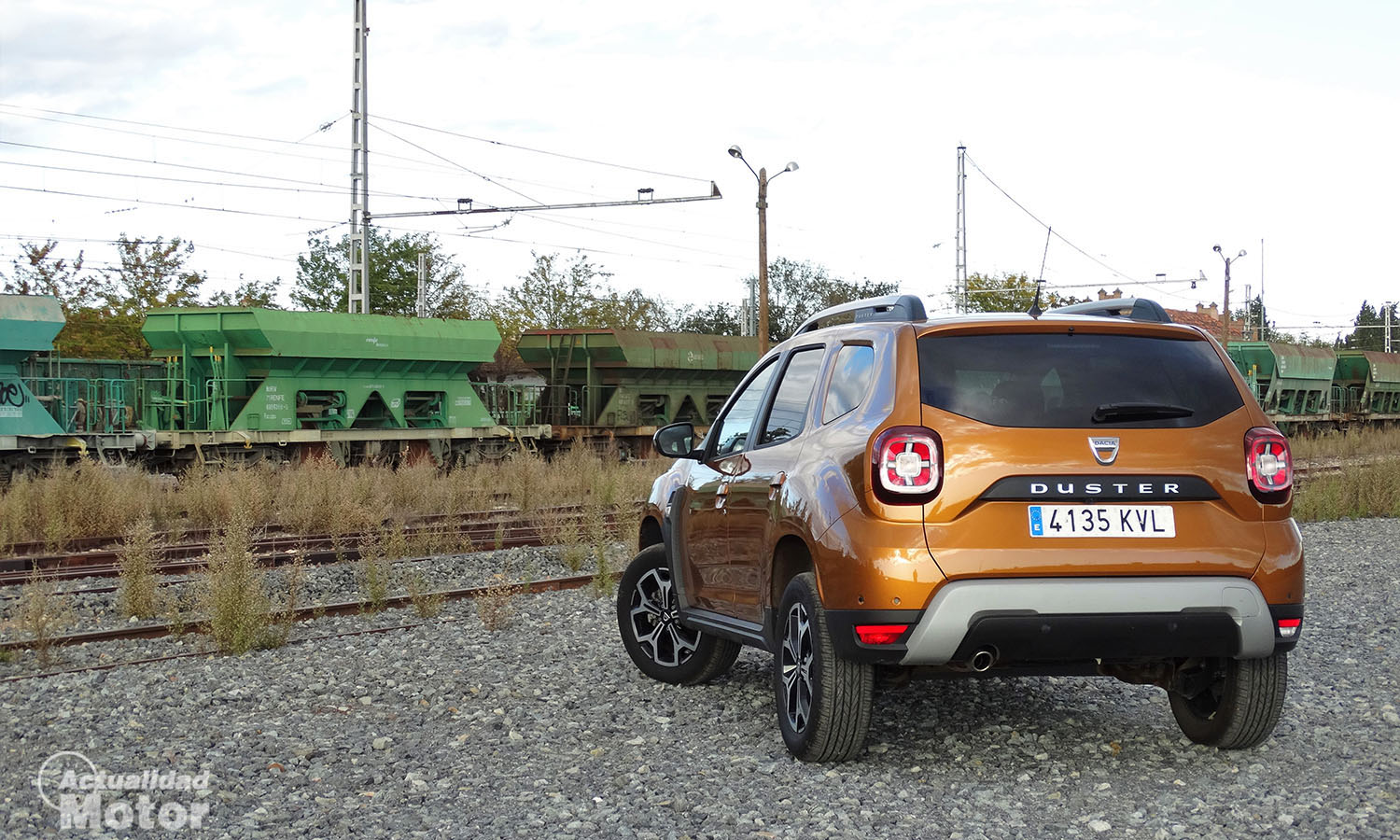
The Dacia Duster has been a very successful model since its arrival on the market back in 2010. Thousands and thousands of units have been sold throughout Europe and many customers are really satisfied with their car. Nevertheless, time has passed and the Duster has become very old-fashioned in many ways, despite the numerous updates it has been receiving over the years.
Compared to the competition, it is cheaper, it is true, but I do not consider that it offers a good quality-price-equipment ratio. It is a noisy car, uncomfortable in some sections, with some notable shortcomings in the middle of the year 2020 and very improvable in rolling quality. Nevertheless, the most worrying is the security section. And it is that not even as an option we can request an automatic emergency braking or a lane departure alert.
El SsangYong Korando seems to me a more successful car. Yes, it has a higher price, but in my opinion it has a value for money-equipment that is much higher than that of the Duster. As standard, it has much more equipment than its Romanian rival, its interior is more accomplished, it is more comfortable and it is better soundproofed, at a safety level they are practically not comparable and it is somewhat more spacious inside (although it is also larger).
The negative points that I see in the Korando are the exterior and interior design, as well as the fuel consumption in its gasoline engine. I keep saying that a gasoline engine with about 120 hp could come in very handy for this South Korean. The trunk is also improvable considering its exterior size. In any case, it is a car that can be more interesting with diesel mechanics, since the consumption of gasoline is high.
other rivals

Few are the rivals that these two models have. There are no cars with a price as low as the Dacia Duster, and there is also no model with a price and segment similar to the SsangYong Korando that comes close to its level of equipment. In addition, both have very good offroad capabilities and good interior space.
Some models of similar size, although of superior price and quality, are the Hyundai Kona, Renault Captur, Citroen C3 Aircross or Mitsubishi ASX, among others. Of course, none of them offer the same capabilities off the asphalt as the Korando and the Duster. The Subaru XV is a great compact SUV, with fantastic off-road capabilities, but its price is much higher, starting at approximately 23.000 euros.
Botton line
Negative points Dacia Duster
- Interior qualities and finishes
- Very few active security systems and assistants
Positive points Dacia Duster
- Good offroad capabilities
- Very low price
Negative points SsangYong Korando
- Design not very close to European tastes
- Improved trunk
Positive points SsangYong Korando
- Price-equipment ratio
- ride comfort
